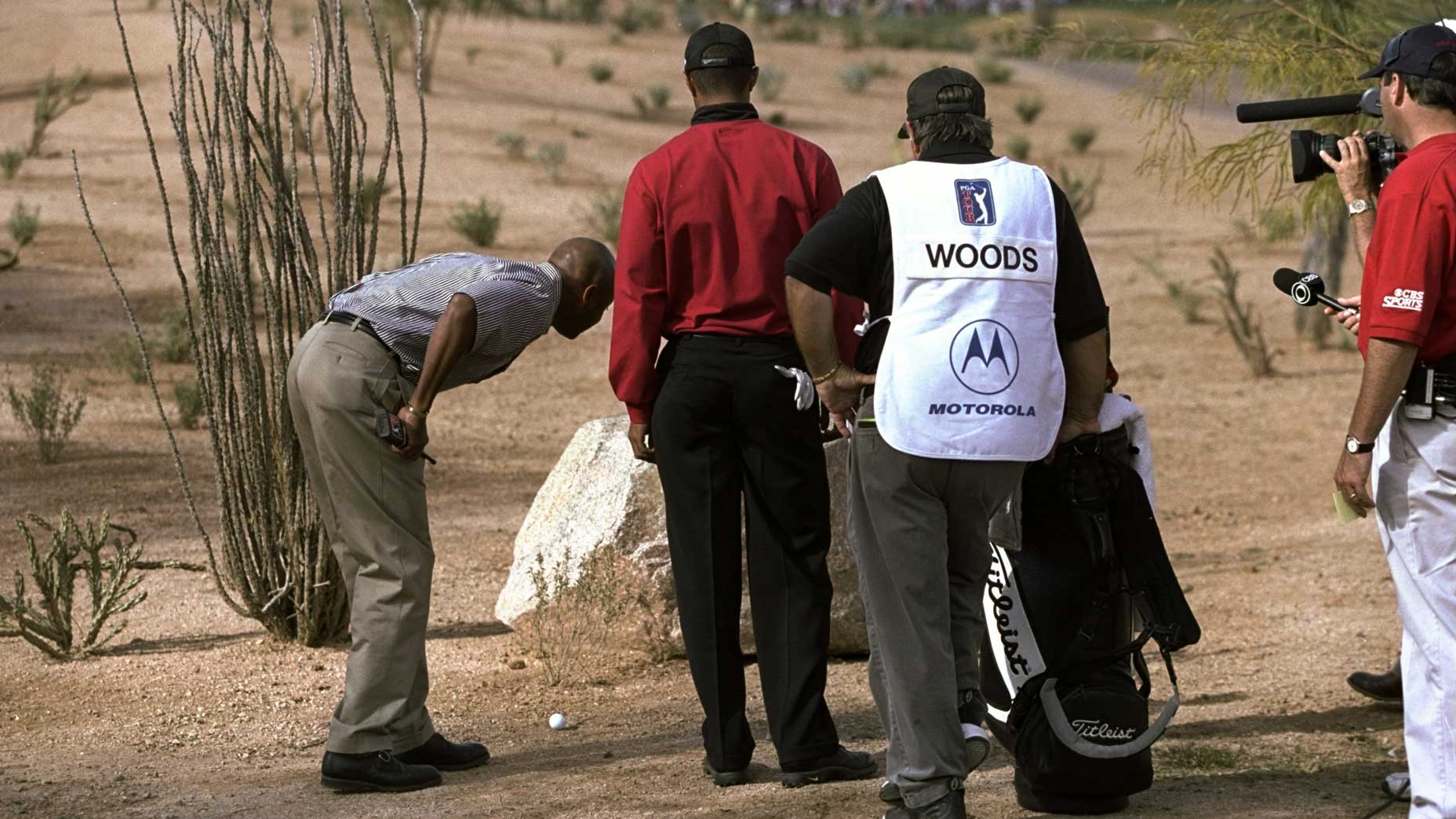Golf broadcasts continue to up their game in three specific ways.
The first advancement is in what we’re seeing. Simply put, we have more opportunities to watch golf. The Tour’s streaming transition to ESPN+ last year has delivered a high-quality product that means you can have golf on, like, all the time. And you can see the ball without squinting, too.
The second advancement is in how we’re seeing it. Technological advances mean tracing is available on more and more shots. Drones have given us dramatic overhead views of the action. There’s more information available and it’s presented with a better aesthetic, producing a smarter and more engaging broadcast.
The third advancement comes from answering questions that we’re asking as viewers. The last two Sundays have included final-round interviews with mic’d up players, trailing first Max Homa and next Keith Mitchell as they play a hole on Sunday. Are golf broadcasts perfect? Of course not. But the distance between what viewers are clamoring for and what presenters are delivering seems to be shrinking.
Enter Thursday morning at the WM Phoenix Open, when ESPN+ took a moment from pre-round coverage to revisit one of the most unforgettable moments in the tournament’s history — and answered a question I’ve always wondered. Why was Tiger allowed to move that giant rock?
You’ve likely seen a clip of Tiger Woods directing traffic in the desert as a dozen or so grown men push a boulder as he looks on, grinning. But why was it allowed to happen? We got the story.
On Thursday’s broadcast, ESPN+ cut to an interview Orlando Pope, the rules official actually on the scene on that day in 1999. Pope, whose title was listed as “Senior Director, TV Rules and Video Analyst,” remembered the scene.
“I got the call on the radio for a ruling on 13 with Tiger Woods, and I was the closest to it,” Pope said. Woods had his tee shot into the desert on the par 5, leading to a curious situation. When he arrived, Woods had an observation.
“I think this thing’s just kinda laying here,” he told Pope.
“I pull up and I said, ‘Well, what do you mean just laying here?'” Pope remembered.
Woods made the case that the rock, despite its size, was a loose impediment. After some consideration, Pope agreed with him.
“I said, well, part of the definition of a loose impediment is it can’t be solidly embedded, so the size doesn’t really matter. So we just looked around, I think Fluff [Cowan] was his caddie at the time, and he’s just kinda pushing.”
Woods double-checked to make sure that they had approval to move the boulder.
“He says, ‘you think I can move it?’ I said ‘yeah, sure, you can move it,'” Pope said with a smile. “Not thinking one iota that he’s even thinking about moving the boulder.”
But Woods had a follow-up question. “Can I have help?”
“I said, ‘you can have all the help you want,'” Pope said. “He turns back and looks at the crowd and they just start screaming and yelling. And before I knew it they’re running over to move the boulder.”
There was still one way it could all go wrong, he added. If one of the rock-movers kicked Woods’ ball in the process, there would be trouble.
“Since he’d authorized it, if they’d moved his ball he would have gotten a penalty shot. But [Woods’ playing partner] Rocco Mediate was over there helping keep some of them back so his ball didn’t move. But they moved it, he said ‘that’s not far enough.’ Then they moved it again. He hit the shot. And he made birdie.”
It was a relatively simple description in its retelling. Like any iconic Tiger Woods moment, the legend has only grown with time. The controversy around it has, too: Some questioned whether it was in the spirit of the rules to enlist a Tiger-sized gallery (would any other pro have summoned the same enthusiasm?) to move it.
But it makes for a heck of a story — and a great way to begin a broadcast.
You can see Pope in the original clip below.
As for the rock? It’s still there, now accompanied by a plaque.
It’s pretty tough to move, after all.
